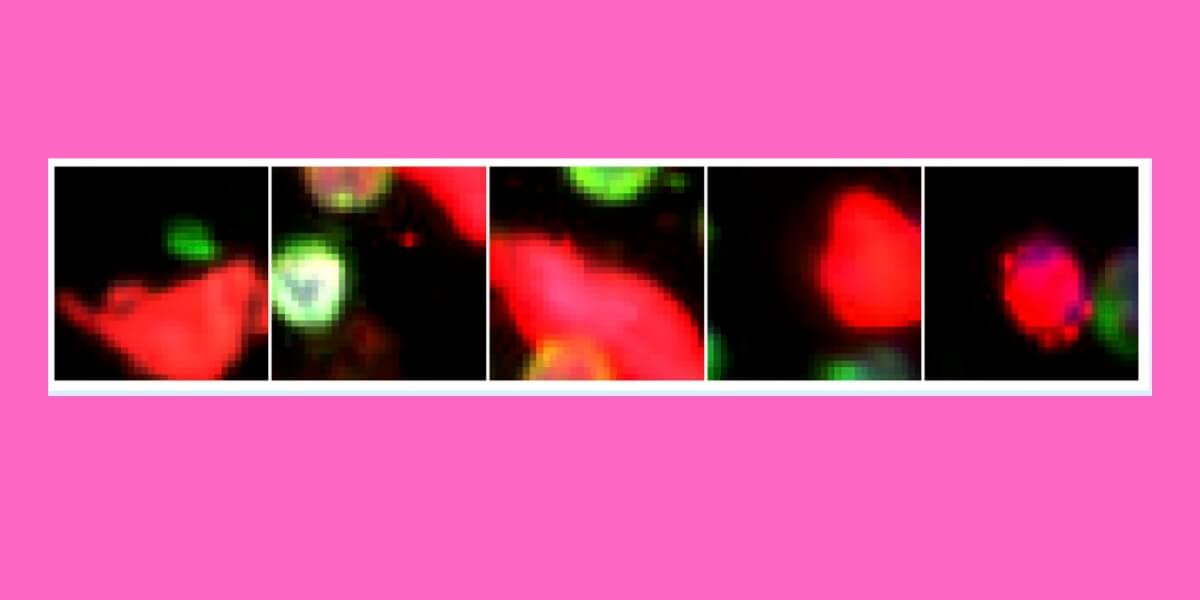When cancer spreads, tiny amounts of cells can break away from tumors and circulate in the bloodstream. A liquid biopsy is a means to detect the presence of cancer by detecting these cancer cells floating in blood samples. However, current state-of-the-art methods have necessitated trained specialists to comb through and review images of thousands of cells out of potentially millions of cells on a slide over a period of many hours.
Now, researchers at the USC Viterbi School of Engineering and the USC Dornsife College of Letters, Arts and Sciences have developed a new AI algorithm to automate the detection of a few cancer cells among millions of normal blood cells. In approximately 10 minutes, the algorithm is able to find the “needles in the haystack,” to detect cancer more quickly, determine if cancer has returned and potentially, inform treatments.
The new algorithm, named RED (Rare Event Detection) is outlined in a paper in Precision Oncology by Javier Murgoitio-Esandi who was a PhD in the USC Department of Aerospace and Mechanical Engineering (focused on machine learning and artificial intelligence), his advisor, Assad Oberai, Professor of Aerospace and Mechanical Engineering, and Peter Kuhn, University Professor, Dean’s Professor of Biological Sciences and Professor of Biological Sciences, Medicine, Biomedical Engineering, Aerospace and Mechanical Engineering and Urology along with colleagues.
While Kuhn, throughout his career has built systems to streamline the detection of cancer related cells, the deep learning approach developed through this collaboration is a way to supercharge the process.
Oberai explains, “Machines do not need to curate information in the same way humans do.”
RED works differently than existing computational tools for liquid biopsies that require a human to be in the loop. In fact, instead of looking for specific, known features of a cancer cell and grouping the millions of cells down into smaller groups, RED does not even need to know what the “needle” it is searching for looks like. According to Oberai, who is the corresponding author on the paper, RED uses AI to identify unusual patterns and ranks everything by rarity – the most unusual findings rise to the top.
Like that Sesame Street game, the algorithm points out “that one of these things is not like the others.” Or as Kuhn says, the algorithm can look at millions of cells and “separate outliers from non-outliers.”
This body of work which was funded by the Ming Hsieh Institute for Research on Engineering-Medicine for Cancer Research builds on previous work by Oberai and Kuhn related to breast cancer.
Oberai reminds us of the urgency of the topic. “One in eight women will be diagnosed with breast cancer in their lifetime,” he emphasizes.
It’s personal for Kuhn who has worked on the topic for over a decade. His mother was diagnosed with breast cancer and Kuhn, as director of the Convergent Science Institute in Cancer at USC Michelson Center, has built up a large body of human-annotated data related to breast cancer. This allowed the joint research team to test the algorithm in two ways: first looking at the blood results of known patients with advanced breast cancer, then in another test adding cancer cells to normal blood samples to see if RED could find them. The algorithm:
- Found 99% of added epithelial cancer cells
- Found 97% of added endothelial cells
- It also reduced the amount of data to review by 1,000 times.
Oberai says that in addition to removing human bias, “We are able to find more signal than the old approach. We were able to find twice as many interesting cells compared to the old approach.”
He adds, “This paper establishes this technique as a way to computationally isolate ‘interesting’ cells that are associated with cancer.” (He means “interesting” in the way a crime suspect is a person of interest.”)
This new approach is already paying significant dividends and is being applied to understand outcomes for cancers like breast cancer, pancreatic cancer and multiple myeloma.
Kuhn explains the impact of the work. “[This] is a brand new way and in many ways non-obvious way of analyzing the haystack that triggers a whole wave of new AI-driven, deep learning-driven developments.”
This article was written by Amy Blumenthal at the USC Viterbi School of Engineering.
Image credit: Oberai and Kuhn research groups at USC
